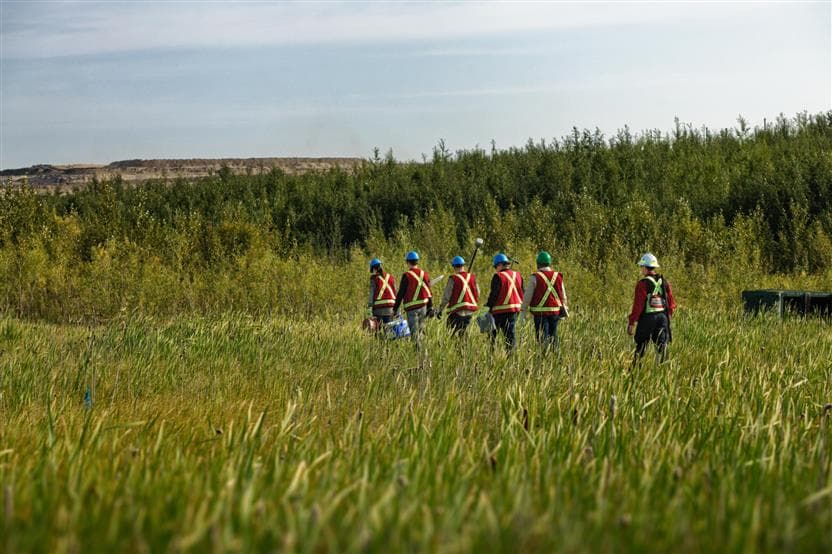Energy development disturbs land. We work to mitigate this by developing detailed reclamation plans that consider the impact of our operations and embed learnings from local Indigenous Peoples and community members.
Our work focuses on reducing the amount of land we disturb and facilitating the return of a biologically diverse landscape for naturally sustainable ecosystems.
We do this by:
- reducing the impact of our operations on the environment through scientific research and implementing best management practices
- collaborating with neighbouring companies to reduce cumulative effects of development
- progressively reclaiming disturbed lands that are no longer required to support operations
- working with industry peers and multi-stakeholder organizations on initiatives to conserve and reclaim habitat for birds, mammals, fish and other species
- integrating traditional knowledge from Indigenous Peoples.
Our approach
It is important to consider how the land will be used following reclamation and closure throughout the life cycle of a project, from initial planning through to final reclamation. This includes considerations such as what species to plant, when and where.
Before developing a new mine or in situ project, our plans outline the life of the project through to reclamation and closure. We regularly update our plans throughout the project and incorporate new knowledge and technologies as they are developed. The Alberta Energy Regulator (AER) must authorize reclamation and closure plans for all oil sands projects in Alberta and approve updated plans as they are developed.
Once land is revegetated as per the reclamation plan, it is considered "reclaimed". Only after reclaimed land meets the expectations of equivalent land capability and goes through an application and approval process with the regulator can it be certified and returned to the Crown.
Lake Miwasin [me-WA-sin], which means "nice/beautiful" in Cree, is a demonstration pit lake which is part of our aquatic closure program designed to ensure we can successfully reclaim mine sites. It represents a scaled version of the reclamation and closure plan for Base Plant, including uplands, wetlands and a demonstration pit lake (Lake Miwasin) that contains PASS-treated fluid tailings. Pit lakes are considered a global best practice in mining industries. There are several pit lakes in Alberta created from former coal mine pits that are now used for recreational fishing and swimming.
To date, Lake Miwasin is progressing well in terms of water quality and plant and wildlife in the area. Throughout the Lake Miwasin project, local Indigenous communities have collaborated with us on the research and monitoring.
Monitoring lands around operations and our reclaimed sites
We monitor biodiversity in and around our oil sands operations and reclaimed sites by collecting information on soil, vegetation, and water quality. We also evaluate biodiversity across our sites through wildlife monitoring, which we conduct according to approved wildlife mitigation and monitoring programs.





